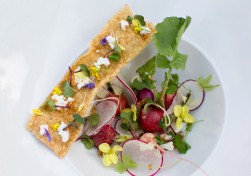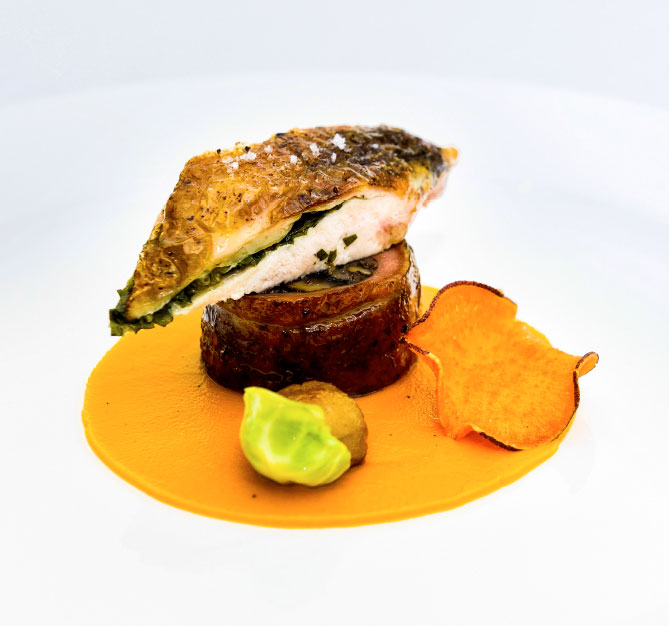Hailing from Toulon in the South of France, chef Sébastien Giannini has spent the last 20 years honing his craft under some of the world’s best chefs, reaching the final of the prestigious Bocuse D’Or Culinary Competition in 2010. Last year he was appointed executive chef at The St. Regis Washington, D.C., heading up its new Mediterranean restaurant, Alhambra.
What’s your favorite dish to cook?
Bouillabaisse. I grew up in the South of France and my grandmother taught me how to make it. Now it reminds me of home.
What do you eat when you’re home alone?
Seasonal fruit – I like to eat directly with my pocket knife. Every Saturday, I go to Potomac Farm Market with my wife and daughter. It reminds me of the markets I grew up with in the South of France.
Which dish that you’ve created are you most proud of?
Salmon stuffed with langoustine and turmeric potatoes. This was the dish I created at Bocuse D’Or in 2010. To perfect the final dish, you need to have practiced it 40-50 times, trying different iterations each time.
Are there any foods you think are overrated?
I feel like burgers in hotels are generally overrated. There is often too much playing around with the toppings, and the original concept is lost. There is a chain of hamburger restaurants originally from Arlington, VA, where I am proud to be a regular guest. They make a classic American burger.
What’s the best thing to eat in D.C.?
It’s not exactly D.C., but you can’t beat Maryland crabcake. The crab feast is a longstanding tradition. Whether it’s in a seafood restaurant on the Eastern shore or in the backyard with paper-wrapped picnic tables, the residents of the Chesapeake region can be found cracking crab legs all summer.
If you could revisit a meal you’ve eaten in the past, what would it be and why?
One of my best memories from when I was young is eating cantaloupe. In the South of France there’s a region called Cavaillon that has incredible melons. Try this once and you’ll never think of cantaloupe in the same way. We eat them with a crisp glass of rosé, and gressin (breadsticks), relaxing by the sea with friends. There’s simply nothing better!
What was your favorite food as a child and do you still eat it now?
Pieds et paquets (“feet and packages”) is a Marseille specialty, one that’s certainly not for everyone. It’s a stew with sheep’s feet and sheep’s tripe. My grandmother would make it for me and I still love it, especially in the winter.
Can you remember the first thing your mother taught you to cook?
Banana tart. I don’t make it any more because I want to keep the memory of the tart and the taste clear in my mind. I do not wish to alter it in any way, either intentionally or otherwise.
What is your guilty pleasure food?
Strawberries and whipped cream with Grand Marnier.
How long does it take you to create new recipes?
It can take up to a month – you need the feedback from your guests and your team. Sometimes we do up to 20 tastings before we perfect a recipe.
Is there a culinary trend you detest?
Molecular cuisine. It’s too cold and far removed from the product. For instance, if you receive a perfect strawberry, picked at the perfect time, perfectly ripe and juicy, but you blend it and make it into the form of a tomato, the product is wasted.
Who is your greatest inspiration?
Alain Ducasse. He lets young chefs grow, while teaching them to respect the products, the season and the region where the products come from. He also has a clear vision of where his team is going and how to mentor his protégés.
Your address: The St. Regis Washington, D.C.
































